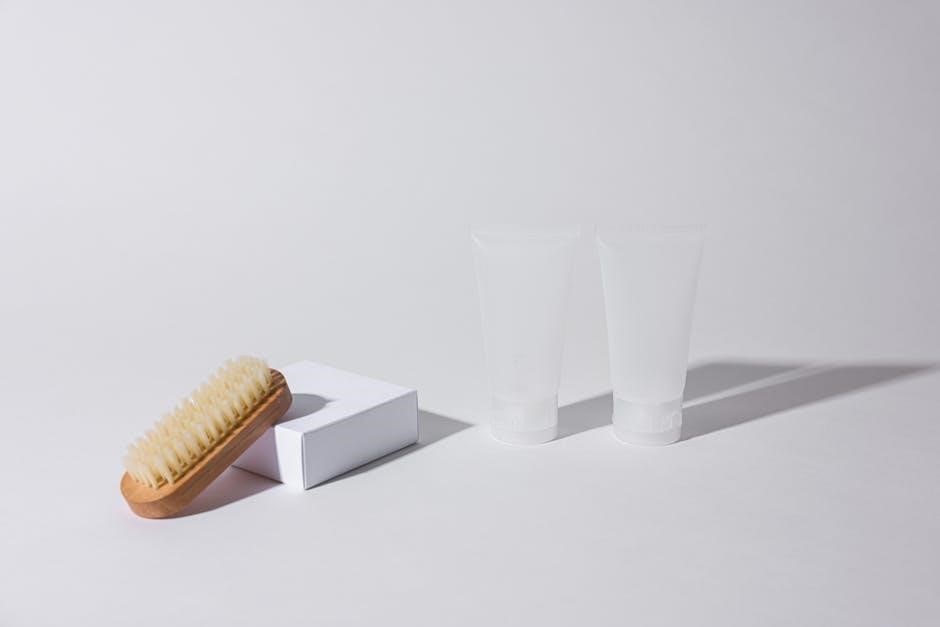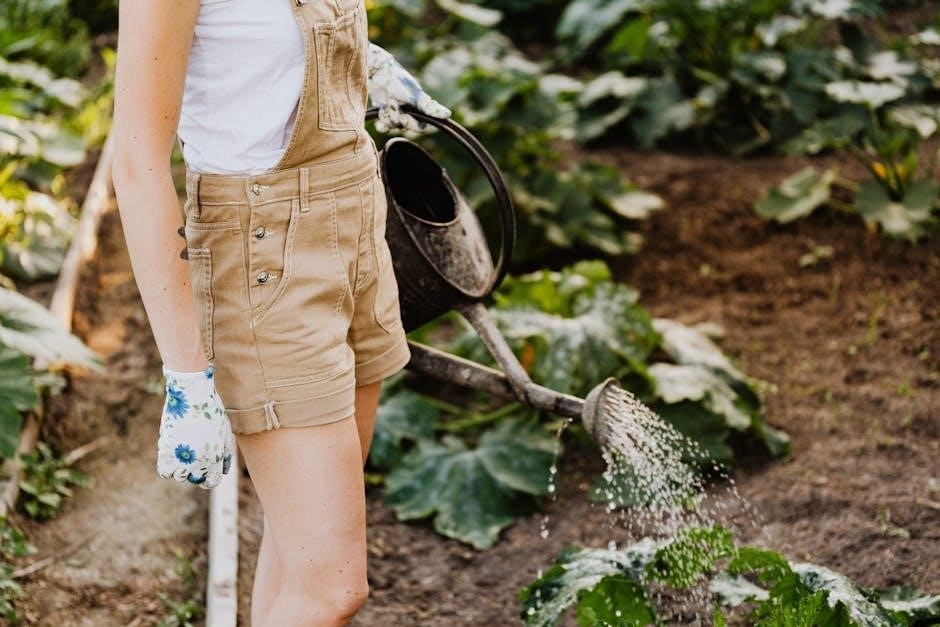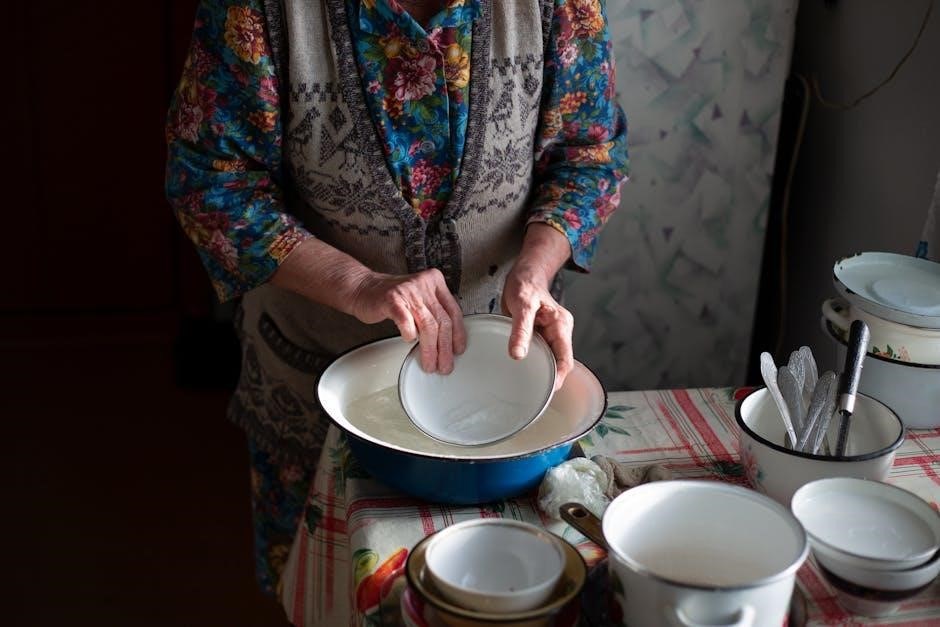
manual handling in care homes
Manual handling in care homes involves lifting, pushing, or pulling residents, essential for daily care. Proper techniques ensure safety, dignity, and comfort for both staff and residents.
1.1 Definition and Scope of Manual Handling in Care Settings
Manual handling in care settings refers to the use of bodily force to lift, push, pull, or support objects, including people. It encompasses tasks like transferring residents, repositioning, and handling medical equipment. The scope includes all activities where care staff physically interact with residents or objects to provide care. This can involve repetitive motions, awkward postures, or sustained efforts. Proper techniques and equipment are essential to minimize risks. The legal framework, such as the Manual Handling Operations Regulations 1992, emphasizes assessing and reducing these risks to ensure safety and dignity for both residents and staff.
1.2 Importance of Safe Manual Handling for Resident and Staff Safety
Safe manual handling is crucial to protect both residents and staff from physical harm. Incorrect techniques can lead to injuries, musculoskeletal disorders, and long-term health issues. Proper practices ensure residents are handled with dignity and comfort, reducing the risk of accidents. Employers must comply with regulations like the Manual Handling Operations Regulations 1992, which mandate risk assessments and safer handling methods. Prioritizing safe manual handling fosters a safer, more respectful care environment, benefiting both residents and staff while minimizing legal and financial liabilities for care homes.

Risks Associated with Manual Handling in Care Homes
Manual handling in care homes poses significant risks, including physical injuries to staff and potential harm to residents, necessitating safe practices to ensure well-being.
2.1 Physical Injuries to Care Home Staff
Physical injuries to care home staff are a significant concern due to repetitive lifting and handling tasks. Back strains, sprains, and musculoskeletal disorders are common, often leading to sick leave and reduced morale. Poor lifting techniques and inadequate training exacerbate these risks, highlighting the need for proper protocols. Employers must ensure staff are trained in manual handling to minimize injuries and maintain a healthy workforce. The Manual Handling Operations Regulations 1992 emphasize the importance of risk assessments to prevent such incidents, ensuring a safer environment for both staff and residents.
2.2 Potential Harm to Residents During Handling
Residents in care homes may suffer physical harm during manual handling, including fractures, bruises, or injuries from falls. Improper lifting techniques can lead to discomfort, pain, or even long-term mobility issues. Additionally, residents may experience emotional distress or loss of dignity if handling is not performed respectfully. Care homes must prioritize safe handling practices to protect residents from physical and psychological harm, ensuring their well-being and maintaining trust in care services. Proper training and equipment are essential to minimize these risks and provide a safe, dignified environment for all residents.
2.3 Long-Term Health Consequences for Both Parties
Improper manual handling can lead to long-term health issues for both staff and residents. Staff may develop chronic musculoskeletal disorders, such as back pain or joint problems, reducing their ability to work. Residents, especially those with limited mobility, may suffer from prolonged discomfort, chronic pain, or even permanent damage. Repeated unsafe handling can also lead to emotional stress and mental health challenges for both parties. Addressing these risks is crucial to ensuring long-term well-being and maintaining a safe, supportive care environment.

Legal and Regulatory Framework
Manual handling in care homes is governed by The Manual Handling Operations Regulations 1992, requiring employers to assess and reduce risks, ensuring a safe working environment.
3.1 The Manual Handling Operations Regulations 1992
The Manual Handling Operations Regulations 1992 require employers to assess manual handling risks and reduce them where possible; Employers must provide training and ensure tasks are safe.
3.2 Employer Responsibilities in Reducing Manual Handling Risks
Employers in care homes must conduct thorough risk assessments, implement safe handling practices, and provide appropriate equipment and training. They are responsible for ensuring staff understand proper techniques and use assistive aids. Employers must also monitor tasks, maintain equipment, and review policies regularly to minimize risks. Providing a safe environment and promoting a culture of safety are key priorities to protect both residents and staff from injuries.

Best Practices for Safe Manual Handling
Best practices include assessing tasks, using assistive equipment, and following proper lifting techniques. Staff should maintain a safe posture, minimize repetitive movements, and ensure a clear path for handling.
4.1 Proper Lifting Techniques and Body Mechanics
Proper lifting techniques involve bending at the knees, keeping the back straight, and lifting with leg muscles. Ensure the load is close to the body, avoid twisting, and maintain balance. Staff should position themselves correctly, use a firm grip, and lift smoothly without jerking. Training emphasizes maintaining a neutral spine and engaging core muscles to prevent strain. These techniques reduce injury risks and promote safe handling for both staff and residents in care settings.
4.2 Use of Assistive Equipment and Tools
Assistive equipment like hoists, slings, and sliding aids is crucial for safe manual handling. These tools reduce the need for physical lifting, minimizing strain and injury risks. Hoists and slings enable smooth transfers, while electric profiling beds adjust heights to facilitate safe movements. Proper training on equipment use ensures effectiveness and resident comfort. Investing in such tools not only enhances safety but also promotes dignity and independence for residents, making care homes more efficient and compassionate environments for both staff and residents.

Equipment and Aids for Manual Handling
Equipment and aids are vital for safe manual handling in care homes. Hoists, slings, and electric profiling beds help reduce physical strain and enhance resident safety.
5.1 Hoists, Slings, and Transfer Aids
Hoists, slings, and transfer aids are essential tools in care homes, enabling safe and dignified resident transfers. Ceiling or portable hoists minimize manual effort, while slings provide support. Transfer aids like slide boards and turntables facilitate smooth movements, reducing the risk of injury to both residents and staff. These aids not only enhance safety but also promote independence for residents, making daily care tasks more manageable and efficient. Proper training ensures their effective and safe use in various care settings.
5.2 Electric Profiling Beds and Adjustable Furniture
Electric profiling beds and adjustable furniture are crucial in reducing manual handling risks. These beds allow for easy height adjustment, enabling residents to be moved safely without excessive lifting. Adjustable furniture, such as riser recliner chairs, supports residents in standing or sitting, minimizing strain on care staff. These tools promote resident independence and comfort while reducing physical demands on caregivers. They integrate seamlessly with other aids, creating a safer and more efficient care environment that prioritizes both resident well-being and staff safety. Their use is highly recommended in modern care settings.

Training and Assessment
Training and assessment are essential for ensuring safe manual handling practices. They equip staff with skills to minimize risks, promoting a safer environment for both residents and caregivers.
6.1 Mandatory Training for Care Home Staff
Mandatory training is crucial for care home staff to ensure safe manual handling practices. It covers proper lifting techniques, use of assistive equipment, and risk assessment. Training emphasizes compliance with the Manual Handling Operations Regulations 1992, focusing on minimizing physical strain and preventing injuries; Staff learn how to safely transfer and support residents, promoting dignity and comfort. Regular updates and assessments ensure ongoing competency, fostering a culture of safety and accountability within care settings.
6.2 Risk Assessment Procedures for Manual Handling Tasks
Risk assessments are vital to identify and mitigate hazards in manual handling tasks within care homes. They evaluate factors such as the resident’s mobility, the environment, and the task’s complexity. Employers must conduct thorough assessments to comply with the Manual Handling Operations Regulations 1992, ensuring that hazardous tasks are avoided or minimized. Staff are trained to recognize risks and implement safe strategies, reducing the likelihood of injuries to both residents and caregivers; Regular reviews of these assessments adapt to changing needs, ensuring ongoing safety and legal compliance.

Resident-Centered Manual Handling
Resident-centered manual handling prioritizes individual needs, promoting dignity and comfort; It involves residents in decision-making and ensures tailored support, enhancing their care experience and safety.
7.1 Understanding Resident Mobility and Needs
Understanding each resident’s mobility and needs is crucial for effective manual handling. Assessing their physical capabilities, medical conditions, and personal preferences ensures personalized care. This evaluation helps in selecting appropriate techniques or equipment, minimizing risks of injury or discomfort. Tailored approaches respect residents’ dignity and autonomy, fostering trust and cooperation. Regular updates to care plans adapt to changing mobility levels, ensuring continuous safety and comfort for all residents.
7.2 Promoting Dignity and Comfort During Handling

Promoting dignity and comfort during manual handling is essential for residents’ well-being. Using appropriate techniques and equipment ensures residents feel respected and secure. Communicating clearly, respecting personal space, and involving residents in decisions enhances their confidence; Proper positioning, support, and maintaining privacy are vital. Staff should be trained to prioritize residents’ comfort, avoiding unnecessary strain or discomfort; By focusing on residents’ emotional and physical needs, care homes can create a safe, respectful, and compassionate environment, reducing anxiety and fostering trust. This approach also minimizes the risk of injury for both residents and staff.

Challenges in Implementing Safe Manual Handling
Challenges include insufficient resources, staff shortages, and high workloads, which can hinder the consistent application of safe manual handling practices in care homes.
8.1 Lack of Resources or Equipment in Some Care Homes
Many care homes face challenges due to limited budgets and outdated policies, leading to insufficient access to essential manual handling equipment like hoists and slings. This lack of resources forces staff to rely on manual lifting, increasing the risk of injuries to both residents and caregivers. Additionally, inadequate training on proper equipment usage further exacerbates the problem. Without proper tools, care homes struggle to maintain safe handling practices, compromising the quality of care and safety standards. Addressing these resource gaps is critical to ensuring a safer environment for all.
8.2 Staff Shortages and Workload Pressures
Staff shortages in care homes often lead to increased workloads, forcing employees to rush or handle residents without proper assistance. This can result in improper lifting techniques, as exhausted staff may skip using available equipment or lack the time for proper preparation. High turnover rates further complicate the issue, as inexperienced staff may not fully understand safe manual handling practices. These challenges create a perfect storm of risks, endangering both staff and residents. Addressing staff shortages is essential to maintaining a safe and efficient care environment.

Future Trends in Manual Handling
Innovative technologies like robotic aids and advanced hoisting systems are transforming manual handling in care homes, reducing injuries and enhancing care quality for residents and staff.
9.1 Advancements in Assistive Technology
Advancements in assistive technology, such as robotic exoskeletons and smart lifting aids, are revolutionizing manual handling in care homes. These innovations reduce physical strain on staff while ensuring residents are moved safely and comfortably. Smart sensors and monitoring systems can now assess a resident’s mobility needs in real-time, providing personalized support. Additionally, IoT-enabled devices, like automated transfer aids, are being integrated to streamline handling tasks. These technologies not only enhance efficiency but also promote dignity and independence for residents, making care homes safer and more modern workplaces for staff.
9.2 Moving Toward a No-Lift Policy in Care Homes
A no-lift policy aims to eliminate manual lifting of residents, prioritizing their safety and dignity. By utilizing hoists, slings, and electric profiling beds, care homes reduce injury risks for both residents and staff. This approach aligns with regulatory guidelines and promotes a culture of safety. Transitioning to such policies requires staff training and investment in assistive equipment. The goal is to create an environment where manual handling is minimized, ensuring sustainable care practices that protect everyone involved while maintaining high standards of resident care and well-being in the long term.
Safe manual handling is crucial for protecting both residents and staff in care homes. Proper techniques, equipment, and training reduce injuries, ensuring a safer, dignified care environment.
10.1 Summarizing the Importance of Safe Manual Handling
Safe manual handling is essential to prevent injuries and ensure the well-being of both residents and staff in care homes. It minimizes physical strain, reduces workplace accidents, and promotes a safe environment. By adhering to proper techniques and using assistive equipment, care homes can protect their employees from long-term health issues while maintaining residents’ dignity and comfort. Effective manual handling practices also comply with legal regulations, fostering a culture of safety and responsibility.
10.2 Call to Action for Improved Practices in Care Homes
Care homes must prioritize safe manual handling practices to protect residents and staff. Invest in assistive equipment, provide regular training, and foster a culture of collaboration. Encourage staff to report unsafe tasks and ensure all manual handling activities are risk-assessed. By adopting a proactive approach, care homes can reduce injuries, enhance resident dignity, and create a safer working environment. Committing to these improvements is essential for maintaining high standards of care and compliance with legal requirements, ensuring the well-being of everyone involved.